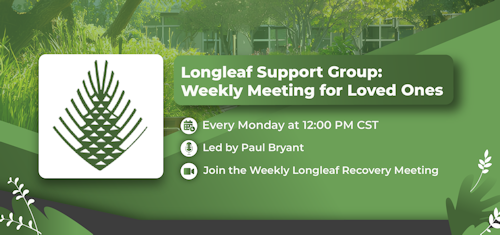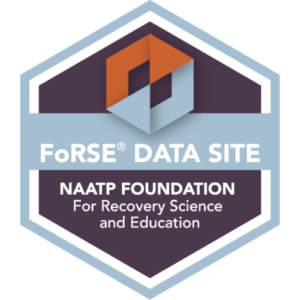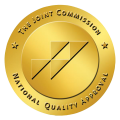If you’re asking, “What is polysubstance abuse in the simplest terms?”—it’s the use of more than one substance at the same time or within a short period to amplify or alter the effects. This can involve mixing alcohol with prescription drugs, combining illicit substances, or using multiple legal drugs simultaneously—often without fully understanding the dangers involved.
Polysubstance abuse is especially dangerous because it increases the risk of overdose, unpredictable side effects, and long-term health problems. Unlike single-substance use, this behavior is less about a preferred drug and more about chasing a desired feeling or escape. That makes it harder to diagnose and treat, as each individual’s combination and pattern of use is different.
At Longleaf Recovery & Wellness, we understand these complexities. That’s why we offer a personalized, multidisciplinary treatment approach that addresses each person’s unique needs. Through cutting-edge therapies and compassionate care, we help individuals break free from the cycle of polysubstance abuse and rebuild a healthier, more stable life.
Common Drug Combinations in Polysubstance Abuse
Some drugs are more common than others due to their availability, perceived benefits, or patterns in recreational use. Below are some of the most often—and risky—combinations:
Both alcohol and benzodiazepines (like Xanax, Valium, or Ativan) slow down the central nervous system. When taken together, their sedative effects intensify, increasing the risk of extreme drowsiness, slowed breathing, unconsciousness, or even death. This combination is often underestimated because both substances are used to relax or reduce anxiety.
This is one of the deadliest combinations. Opioids (such as oxycodone, heroin, or fentanyl) reduce pain and also slow breathing. Benzodiazepines add another layer of sedation. Together, they significantly raise the risk of fatal respiratory depression. The CDC has issued strong warnings against combining these drugs, yet misuse continues.
Mixing a depressant like alcohol with a stimulant like cocaine may seem to balance things out—but it actually creates a toxic chemical called cocaethylene in the liver. This compound increases euphoria but also puts tremendous strain on the heart and liver, raising the risk of heart attacks and sudden death.
Examples include combining Adderall or meth with alcohol. This mix sends conflicting signals to the body, increasing heart rate while depressing other functions. As a result, users may consume more alcohol than they realize, which can lead to alcohol poisoning, heart arrhythmias, and long-term brain damage.
Some individuals mix prescription medications like anti-anxiety drugs or painkillers with illegal drugs to manage highs and crashes. For example, taking Klonopin with meth can dull the crash, or combining hydrocodone with heroin can intensify euphoria. These combinations are unpredictable and extremely difficult to treat in emergencies due to unknown drug interactions.
Why Do People Engage in Polysubstance Use?
There are many reasons individuals may start or continue engaging in polysubstance abuse:
Some people mix drugs to boost the high they feel. For instance, combining alcohol with opioids can lead to stronger sedation or euphoria. While it may seem like a shortcut to feeling better, it greatly increases the risk of serious side effects like slowed breathing or overdose.
Others use different substances to “even out” the effects. Someone might take a stimulant to stay alert after drinking or using a depressant—or the opposite, using a depressant to calm down after a stimulant. This back-and-forth can be very risky and hard on the body.
Many turn to multiple drugs to cope with emotional struggles like stress, anxiety, or past trauma. Mixing substances can seem like a way to escape—but it often creates new problems and makes real healing harder to reach.
In social settings like parties or gatherings, trying different substances can feel like part of the experience—especially for young people. Peer pressure or the desire to fit in can lead to choices they wouldn’t normally make.
As someone uses a drug more often, their body may get used to it, making the effects weaker. To feel the same way again, they may start adding other drugs—unknowingly falling into a pattern that’s difficult and dangerous to break.
The Dangers of Mixing Substances
Mixing substances creates a dangerous and unpredictable combination, often intensifying each drug’s effects. This forces the body to process multiple substances simultaneously, placing severe strain on vital organs, such as the liver, heart, and brain. The result can be immediate and life-threatening consequences, including:
This occurs when breathing becomes dangerously slow or stops altogether. It’s especially common when combining central nervous system depressants such as opioids, alcohol, or benzodiazepines. These substances slow down brain activity that controls breathing, putting individuals at high risk of suffocation or death, especially during sleep.
Some drug combinations can interfere with the heart’s rhythm or strain its ability to pump blood effectively. Stimulants and certain prescription or street drugs may cause the heart to beat too fast, too slow, or irregularly, increasing the risk of heart attack, cardiac arrest, or sudden death.
Using stimulants like cocaine or methamphetamine with other substances can overload the brain, leading to seizures. These sudden electrical disturbances in the brain can cause convulsions, unconsciousness, and long-term brain damage.
When the brain is overwhelmed by too many substances at once, it may shut down as a protective response. This can result in blackouts, fainting, or an inability to stay awake—leaving a person vulnerable to injury or choking.
In the most severe cases, the combined effects of multiple drugs can cause vital systems to shut down entirely. This may lead to a coma—a deep, unresponsive state—or death. Such outcomes are more likely when powerful substances are used together without medical supervision.
Physical and Mental Health Effects of Polysubstance Abuse
The consequences of long-term polysubstance abuse are far-reaching:
Physical Health Effects
- Liver damage and cirrhosis
- Cardiovascular diseases
- Neurological impairment
- Gastrointestinal issues
- Compromised immune system
Mental Health Effects
- Anxiety disorders
- Depression
- Psychosis
- Memory loss and cognitive decline
- Increased risk of suicidal thoughts and behaviors
Mental health deterioration is both a cause and a consequence of polysubstance abuse, creating a vicious cycle that becomes harder to break over time.
Signs and Symptoms of Polysubstance Abuse
Recognizing the signs early can be life-saving. Symptoms vary depending on the substances used, but may include
- Drastic mood swings or erratic behavior
- Confusion or disorientation
- Poor coordination and slurred speech
- Neglect of personal hygiene or responsibilities
- Secretive behavior and social isolation
- Sudden financial problems or legal issues
- Unexplained physical injuries or frequent accidents
- Irregular sleep patterns (e.g., insomnia or excessive sleeping)
- Rapid weight loss or gain
- Frequent nosebleeds or coughing (depending on the method of intake)
- Track marks or bruising on arms or other injection sites
- Persistent coughing, sniffing, or red eyes
- Changes in friend groups or avoidance of long-term relationships
- Denial or defensiveness when questioned about substance use
- Paranoia, hallucinations, or extreme anxiety episodes
Early intervention is crucial. If you or someone you know is showing multiple signs listed above, it may be time to seek professional help.
The Role of Tolerance, Dependence, and Addiction
Polysubstance abuse is more than just the use of multiple drugs—it is often characterized by a dangerous progression through tolerance, dependence, and ultimately, addiction.
Tolerance develops when the body adapts to a drug, leading to the need for higher doses to achieve the same effect. In polysubstance use, combining drugs accelerates this process and increases the risk of overdose due to the body’s complex adaptations.
With continued use, the body becomes dependent on substances to function. Stopping use can trigger withdrawal symptoms—ranging from nausea to seizures—which are often more severe when multiple drugs are involved.
Psychological dependence involves strong cravings and the belief that one cannot function without drugs. Polysubstance users may rely on specific combinations to manage emotions, deepening mental reliance.
Addiction is a chronic brain disorder characterized by compulsive drug seeking and use, even when it leads to harmful consequences. For polysubstance users, addiction is more complex, with multiple substances affecting the brain’s reward system and complicating recovery.

Diagnosing Polysubstance Abuse
Polysubstance abuse can be challenging to identify, as its symptoms often mimic those of other medical or mental health issues. To make an accurate diagnosis, healthcare professionals use several methods, including:
- Medical and Substance Use History– Doctors ask detailed questions about a person’s drug use, including what substances are used, how often, and in what combinations.
- Physical Examination – A medical exam can reveal signs of substance abuse such as weight loss, poor coordination, or changes in heart rate and blood pressure.
- Lab Tests – Blood, urine, or saliva tests help identify which substances are present in the body.
- Mental Health Assessment – Since polysubstance use is often linked with mental health conditions like depression or anxiety, a psychological evaluation is also essential.
Diagnosis is guided by criteria from the Diagnostic and Statistical Manual of Mental Disorders (DSM-5), which looks at patterns of use and the impact on a person’s daily life, relationships, and responsibilities.
Because of the variety of substances involved, accurate diagnosis is critical to developing an effective and personalized treatment plan.
Treatment Options for Polysubstance Abuse
To fully understand polysubstance abuse, it’s important to recognize that it involves more than just stopping drug use. Because it includes multiple substances, treatment must be comprehensive, adaptable, and personalized. Effective plans address both the physical effects and the psychological and social causes of substance use.
The first step in most treatment plans is medical detox. This process safely manages the acute physical symptoms of withdrawal under medical supervision. Detox can be especially challenging in polysubstance users due to unpredictable interactions between substances and overlapping withdrawal symptoms. A medically monitored setting is critical to ensure safety and stability.
Evidence-based therapies such as Cognitive Behavioral Therapy (CBT), Dialectical Behavior Therapy (DBT), and Contingency Management help individuals identify and change negative thought patterns and behaviors related to substance use. These therapies also teach coping skills, emotional regulation, and relapse prevention strategies.
Depending on the substances involved, medications like buprenorphine, methadone, or naltrexone may be used to reduce cravings, manage withdrawal symptoms, or block the effects of certain drugs. MAT is often used for opioid or alcohol dependence but must be carefully administered in polysubstance cases to avoid negative drug interactions.
Both inpatient (residential) and outpatient programs offer structured environments for recovery. Inpatient programs provide intensive care and support, while outpatient options allow individuals to maintain some daily responsibilities. The choice depends on the severity of the addiction and the stability of the person’s living environment.
Groups like Narcotics Anonymous and SMART Recovery offer peer support, shared experiences, and accountability, helping individuals stay connected and committed to sobriety. These groups provide support and emphasize that recovery is a shared journey—not something anyone has to go through alone.
The Importance of Dual Diagnosis Treatment
Dual diagnosis occurs when a person experiences both a substance use disorder and a mental health condition, such as anxiety, depression, or PTSD, at the same time. In many cases of polysubstance abuse, individuals turn to multiple substances as a way to cope with underlying psychological distress. If only the addiction is treated while the mental health issue is ignored, the risk of relapse remains high and recovery becomes more difficult.
An effective dual diagnosis treatment approach addresses both conditions simultaneously through a combination of therapy, medication, and supportive care. This integrated method helps individuals manage their mental health while also working toward sobriety. By treating the whole person—not just the addiction—dual diagnosis care improves long-term outcomes and supports a more stable and sustainable recovery.
Challenges in Recovery from Polysubstance Abuse
Recovering from polysubstance abuse presents a unique set of challenges that can significantly affect the success and long-term sustainability of recovery. These include the following:
Different substances often come with different emotional and environmental triggers. Managing cravings tied to various drugs makes relapse more likely, requiring a personalized, long-term recovery plan.
Evidence-based therapies such as Cognitive Behavioral Therapy (CBT), Dialectical Behavior Therapy (DBT), and Contingency Management help individuals identify and change negative thought patterns and behaviors related to substance use. These therapies also teach coping skills, emotional regulation, and relapse prevention strategies.
Many polysubstance users struggle with underlying mental health issues like depression, anxiety, or PTSD. These can worsen during recovery and increase relapse risk unless treated alongside addiction through integrated care.
Stigma surrounding drug addiction—especially polysubstance use—can lead to isolation and reduced access to support systems. Fear of being judged can prevent individuals from starting or staying committed to treatment.
Addiction often damages trust, routines, and responsibilities. Recovery involves not only physical healing but also repairing relationships, securing housing or employment, and regaining a sense of stability—all of which can be overwhelming without strong support.
Finding Help for Polysubstance Abuse
Understanding what polysubstance abuse is is the first step toward healing. At Long Leaf Recovery & Wellness, we provide a safe, supportive environment tailored to the unique needs of individuals facing multiple substance dependencies. Whether you’re seeking help for yourself or a loved one, remember—taking action today can lead to a brighter, more stable tomorrow. Don’t wait—contact us today and begin your journey to lasting recovery.






